Key Developmental Milestones in Puppy Eye Growth
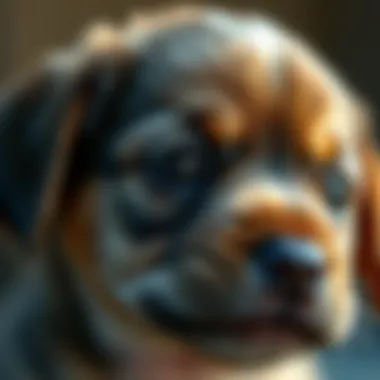
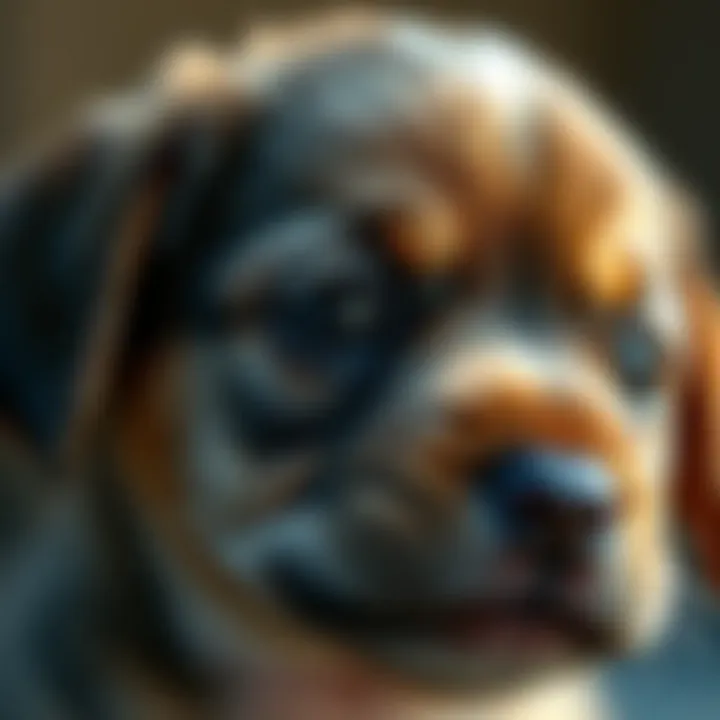
Intro
Puppies, those bouncy bundles of joy, capture our hearts from the moment we set eyes on them. But have you ever paused to think about how these little creatures open their own world when they first crack open those tiny eyelids? This article aims to unravel the nuances surrounding the milestones of puppies' eye development. From the anticipation of that first glimpse of light to what it means for their learning and growth, understanding this journey is vital for any new dog owner.
As puppies come into the world, they are enveloped in a blurred existence, dependent on their mothers for sustenance and warmth. Their eyes remain closed for the first couple of weeks, keeping them in darkness. The typical timeline for this eye-opening varies among breeds, influenced by a range of factors that include health and development. These milestones are crucial, marking a puppy's transition from an entirely sensory world of touch and scent into the visual realm.
In this exploration, we invite you to discover key aspects of eye development, the differences across various breeds, and the implications these have on socialization and learning. A thorough understanding of what lies ahead can empower you, as a dedicated puppy parent, to nurture your furry friend through these formative experiences.
As we venture deeper into the subject, let’s start by discussing how essential care and grooming play a role in maintaining healthy eyes and overall well-being.
Understanding Puppy Development
Puppy development is a fascinating process that lays the groundwork for a healthy and stable adult dog. It’s not just about growth in size, but also includes the progress in sensory abilities, cognitive skills, and social interaction. Understanding these elements can significantly enhance how we support our furry companions through their initial months.
Awareness of puppy development stages is essential for owners. This knowledge informs how you can foster appropriate growth environments and activities tailored to each stage. For instance, as a puppy progresses from opening its eyes to engaging with its surroundings, you might find opportunities to promote socialization and exploration. These periods are pretty pivotal, making early understanding crucial.
In addition to aiding socialization, being informed about these milestones allows you to tailor your training and interactions to best suit your pup's developmental needs. Puppies often benefit from gradual exposure to various stimuli, optimizing their adjustments as they grow. This doesn't just include physical growth, but also emotional and psychological readiness to engage with the world.
Thus, keeping an eye on developmental markers will improve your connection with your puppy, making your relationship even more rewarding. It can also signal any potential concerns early on, allowing for timely veterinary advice when abnormalities arise. This means a happy, healthy pup can bounce and play without a hitch!
"Getting to know your puppy's developmental stages can help you make informed decisions to support their health and well-being.”
By nurturing their growth phases effectively, you're essentially laying a foundation for a well-rounded adult dog. Adequate training, appropriate exposure, and positive reinforcement during these early stages will set the tone for a lifetime of happiness and good behavior.
Whether you're a seasoned dog owner or considering adopting, understanding puppy development is key to fostering that special bond—resulting in your puppy thriving as they blossom into adulthood.
When Do Puppies Open Their Eyes?
Puppy development is always fascinating, especially when it comes to the moment they open their eyes for the first time. This crucial milestone signals the beginning of their journey into the vibrant world around them, providing numerous benefits both to the puppies and their owners. Understanding this phase helps pet parents know what to expect as their little companions grow. With an awareness of when puppies typically open their eyes, owners can better prepare for their needs as they become more curious and engaged in exploring their environment.
Average Timeline for Eye Opening
Puppies are usually born with their eyes shut tight, a protective adaptation to the conditions within their mother's womb. The average timeline for eye opening is around 10 to 14 days after birth, although some may open their eyes as early as 8 days or as late as three weeks. This variance in timing can sometimes catch new pet owners off guard, especially if they are eagerly awaiting signs of progress. The first sight of their puppies peering out into the world can be both thrilling and heartwarming.
During this timeframe, puppies start to develop their sensory capabilities. It’s not just about opening their eyes; it’s about the gradual maturation of their vision. Initially, their eyesight is quite blurry. They are still soaking in the sights and sounds of their surroundings, which will lay the groundwork for better vision as they continue to mature. Regular check-ups during this period can help ensure that everything is proceeding normally.
Variability Among Breeds
Not all puppies are created equal when it comes to developmental milestones. Different breeds can exhibit varying timelines for eye opening based on genetic factors. For instance, larger breeds like Great Danes or St. Bernards may take longer compared to smaller breeds such as Chihuahuas or Pomeranians. This difference can add an extra layer of intrigue for prospective dog owners.
Factors that contribute to this variability include:
- Genetics: Some breeds are predisposed to faster maturation.
- Size: Larger breeds often have longer growth cycles, which includes developmental milestones like eye opening.
- Environmental influences: Healthy growth conditions with plenty of nutrition can also play a role in normal development.
Ultimately, understanding these breed-specific differences allows owners to appreciate each puppy's development journey more fully, reducing anxiety about when to expect various milestones. Puppies grow and learn at different paces, but knowing the general trends can help guide their care effectively.
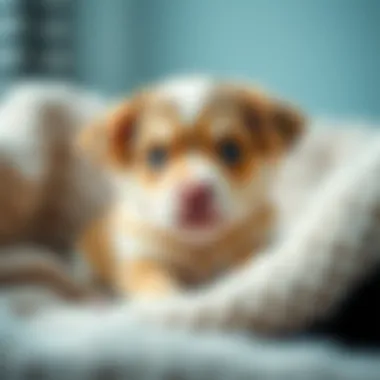
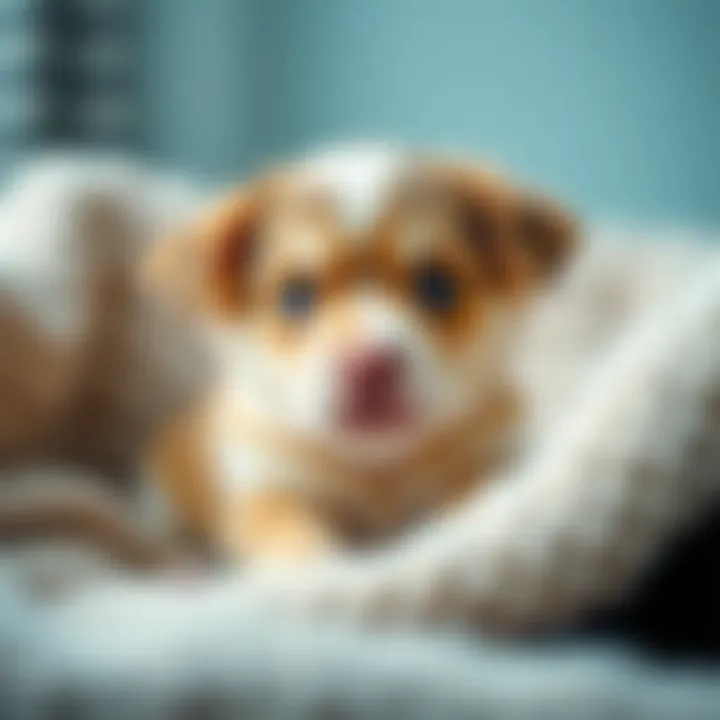
"The eyes are the windows to the soul, and for puppies, they open up whole new worlds to explore."
Encouraging socialization and exploration after eye opening is critical to a puppy's early growth, enriching their experiences as they learn to navigate their environments.
The Physiology of Eye Opening
The journey of a puppy’s visual world begins well before they greet the world with their shining eyes. Understanding the physiology behind this critical milestone offers insight into the remarkable changes happening within those tiny heads. It is a fascinating blend of biological progression and innate need, making it crucial for new pet owners to grasp how these developments influence not just how puppies perceive their environment, but how they will interact with it as they grow.
Development of the Eyes
At birth, a puppy's eyes are sealed shut, a protective mechanism during their early stage of life. This encapsulation serves as nature's way of safeguarding these delicate organs while the rest of their body develops. By the time puppies approach two weeks of age, their eyelids begin to slowly peel back, signaling the onset of new sensory experiences.
This initial opening allows in light, which is a substantial shift from the darkness they were used to. However, it doesn’t mean they can see just yet. Initially, their view is more of a blurred shadowy world. Over the next few weeks, as their eyes continue to develop, clarity comes in stages, like a camera lens coming into focus.
"Until they reach about four weeks old, puppies are still figuring out what their surroundings really look like. It's a gradual evolution from darkness to light and blur to clarity."
This gradual development involves several elements, including the maturation of the cornea, lens, and retina. The cornea becomes more transparent, while the lens becomes more flexible. Behind the scenes, the retina’s photoreceptor cells—responsible for processing visual information—begin their delicate dance of development. Moreover, the nervous system plays a key role here, as the connection between the eyes and brain strengthens, allowing for visual processing to occur.
Role of Eyelid Development
Eyelids do more than just cover the eyes; they are integral to the overall function and health of the eyes during development. In the early stages, eyelids protect against potential injury and exposure to pathogens. These protective flaps also help to ensure that moisture remains in contact with the cornea, which is vital for clear vision as the eyes develop.
When puppies begin to open their eyes, the muscle tone and movement in this area become essential for various functions. It is important to notice how puppies start to blink reflexively soon after their eyes open. This reflex action is not merely about wiping away tears; it signals their nervous system's acknowledgment of light and environment. Additionally, the eyelids themselves undergo changes as the puppies grow, helping to maintain proper eye health.
As puppies grow, you might observe them trying to squint or narrow their eyes when confronted with stark light or unfamiliar sights. That's their natural response, akin to humans shielding themselves from bright sunlight. Owners should keep in mind that this behavior is completely normal and part of their learning process.
In summary, the physiology surrounding the eye opening of puppies is a finely tuned process that lays the groundwork for their future interactions in a broader world, setting the stage for their journey from dependency to playful exploration. Understanding these aspects not only enriches our caring for them during this time but also invites a greater appreciation for their developing lives.
Factors Influencing Eye Opening
Understanding the factors influencing a puppy's eye opening is crucial for several reasons, from ensuring the health of the developing eyes to guiding new pet owners in supporting this vital phase. These factors shape not just when a puppy opens its eyes, but how well they perceive their surroundings right from the start.
Genetics and Breed Specifics
Genetics play a significant part in determining when and how a puppy’s eyes will open. Just like humans, where eye-opening timelines come with variance, puppies aren’t a one-size-fits-all deal either. Some breeds are known for reaching certain milestones sooner than others.
For instance, smaller breeds like Chihuahuas may open their eyes a bit earlier than larger breeds, such as Great Danes. This difference is largely due to the specific breeding characteristics instilled in these dogs. Notably, purebred dogs may display consistent timelines for eye opening compared to mixed breeds, which can exhibit a broader range of development timelines.
There’s also the influence of health genetics in the mix. A puppy’s health history, inherited from their parents, can affect not only eye opening but overall development. Weaknesses in the immune system or congenital eye issues could delay this crucial milestone. As such, awareness of pedigrees can help prospective owners understand what to expect during this introductory phase of their puppy’s life.
Environmental Conditions
Environmental factors also play a pivotal role in the eye-opening process. A calm and nurturing environment often facilitates smoother development. Stressful surroundings during the initial days—such as loud noises, high activity levels, or inadequate shelter—can interfere with a puppy’s ability to open their eyes on time. Puppies are sensitive little beings; too much noise or chaos can hinder their development.
Moreover, the temperature of their surroundings can affect development. Too cold or too hot an environment may prolong the eye-opening timeframe. Puppies thrive in a cozy, warm space where they feel safe and secure; this promotes overall growth, including eye opening.
Additionally, the interactions with their mother and littermates cannot be overlooked. Positive social interactions often aid in the natural progression of development. Through gentle nudging and cues from their mother, puppies learn cues that can encourage them to open their eyes and engage with their world.
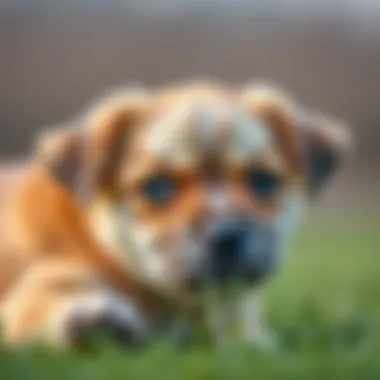
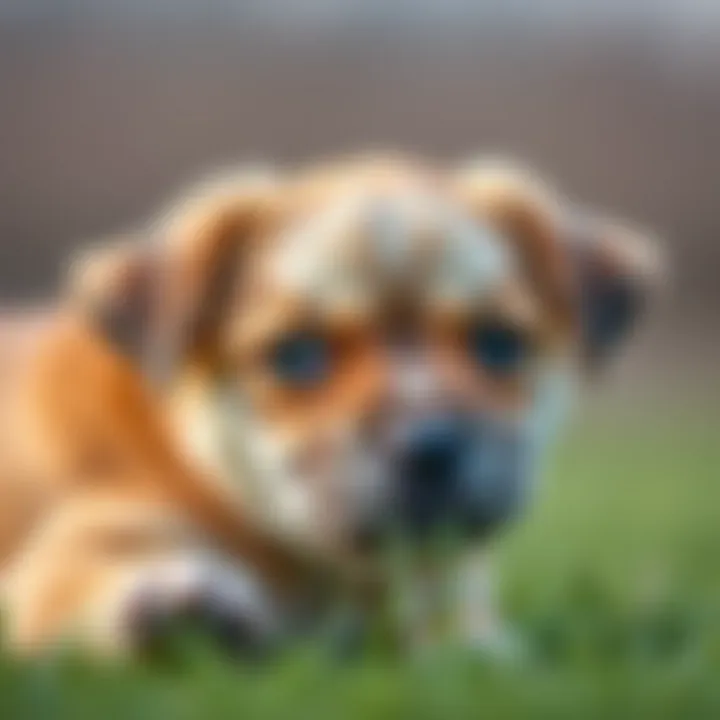
"A supportive environment lays the groundwork for healthy development in puppies past just eye opening."
In summary, genetics and environmental factors work together to shape when a puppy opens its eyes and how they develop their vision thereafter. By keeping these factors in mind, puppy owners can equip themselves with the knowledge to better support their pet's growth, engage positively with their needs, and understand their unique development milestones.
Implications for Puppy Vision
Understanding the implications of a puppy's developing vision is crucial for any new pet owner. As puppies transition from the cozy darkness of their mother's womb to a world bustling with vibrant colors and shapes, their eyes slowly open to reveal a new sense of awareness. This pivotal moment not only marks the beginning of visual perception in puppies but also sets the stage for their social interactions, exploration, and eventual learning.
Puppies may start to differentiate light from dark early on. However, the initial visual perception is often a far cry from the keen eyesight that adult dogs eventually display. During the first few weeks, they see only fuzzy outlines and vague movements. Thus, understanding this gradual process becomes paramount for owners who want to support their growing pets adequately. For instance, knowing that puppies are not fully visual beings in the initial stages can help owners adjust their expectations about training and interactions, which rely heavily on sight.
In addition, the developing vision plays a role in the puppy's confidence as they learn to navigate their environments. If a pup is approached too aggressively or met with overwhelming stimuli, they may respond adversely."The eye is the window to the soul," as they say, and in the context of communication and bonding with their humans, these windows are the first tools for building trust and understanding.
Key Considerations
- Initial visual perception is clouded and not sharply defined. Until 3 to 4 weeks, puppies need more auditory and olfactory cues than visual ones.
- Owners should ensure a stress-free environment to avoid overwhelming their young pups, allowing them to adapt to the new sights slowly.
- Developing strong visual skills is tied to interactions within their surroundings, ensuring they get the right kind of experiences early on.
"A puppy's early visual experiences pave the way for lifelong behaviors and social skills."
By providing an understanding of what puppies experience through their eyes, owners can create appropriate interactions and settings that foster healthy development.
Initial Visual Perception
When puppies begin to open their eyes, it's an exciting but somewhat limited beginning. The visual capability at this stage is primarily about movement rather than fine detail. Initially, they perceive light and dark primarily and may not recognize familiar faces or objects clearly. Instead, this is a time for gradual adaptation.
In this early phase, it’s essential to realize that puppies are not equipped to handle sheer stimuli overload. Most often, their initial habits emerge from their sensory explorations, relying heavily on smell and hearing, which are considerably more developed than their sight. As their eyes gradually adjust, this lays the groundwork for future exploration.
Puppies are notoriously curious, yet their interactions early on need to bring comfort rather than shock. Familiar sounds and smells can help anchor them amidst the blurred forms they see, paving the way for their comfort and easing the transition from darkness to light.
Vision Development Timeline
The timeline for vision development in puppies usually spans over the first few weeks of their lives. Right after their eyes open, the adventure of clarity and recognition begins to take a more definitive shape. Typically, it starts around 10 to 14 days after birth. Within a week or two, they can start perceiving movement more effectively, allowing them to interact more confidently with their environment.
Broadly speaking, the vision development can be seen in phases:
- Week 2-3: Eyes open, fuzzy images appear; they see mostly in shades of gray.
- Week 4: Colors become distinguishable, but not yet vibrant; rather, they identify shapes over colors.
- Week 5-6: Close to full visual development; they may begin recognizing familiar faces and start playing with their littermates more actively.
- Week 7: Puppies typically have established their vision, and their ability to perceive depth starts forming, allowing them to navigate obstacles.
By the end of these early weeks, not only has their sight developed, but this newfound vision enhances their capacity to learn and grow in their new environments. The early days of vision shape their later abilities to interact socially and form bonds, making the implications of these developmental milestones crucial for new puppy parents.
Supporting Puppies Through Early Growth
Puppies, in their initial weeks, are incredibly reliant on their environment for proper development. The early growth phase is a critical period where their senses, especially vision, start to take shape. Supporting puppies during these formative weeks lays a foundation for their overall health and behavior. A nurturing approach not only aids in physiological development but also fosters emotional well-being, ensuring the puppies grow to be confident and sociable dogs.
Creating a Safe Environment
When it comes to establishing a safe space for a puppy, think of it as crafting an open canvas where they can express their curiosity without encountering unnecessary risks. A secure environment is paramount for new puppies. Here are some essential considerations:
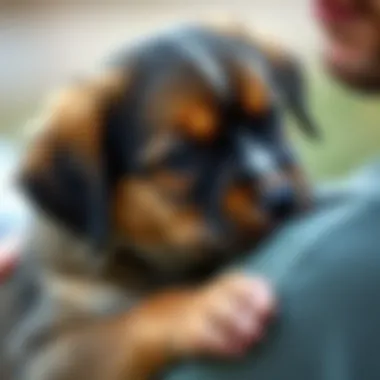
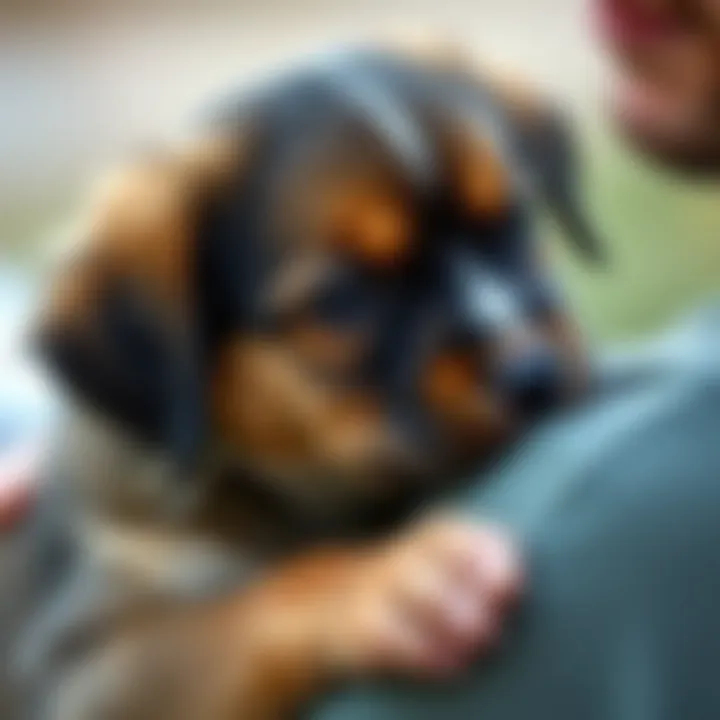
- Puppy-proofing the space: Just like toddler-proofing a home, it’s wise to remove hazards that could harm a curious pup. This includes cleaning supplies, small objects that could be swallowed, and electrical cords they might chew on.
- Comfortable sleeping area: Providing a designated sleeping area is key. Opt for a soft bed and blankets to make them feel secure. Remember, puppies thrive on routine, so keep their sleeping area quiet and consistent.
- Proper confinement: Using playpens or gated areas can help keep puppies contained in a safe zone. This way, they can explore safely while you supervise their antics, preventing any accidents.
- Temperature control: Puppies are like little heat-seeking missiles. Ensure their space is not too hot or cold, keeping them cozy and comfortable.
By considering these factors, you will create a space where puppies can thrive, encouraging their natural instincts to explore while ensuring they remain safe as they start to learn about the world around them.
Encouraging Exploration and Socialization
Once the environment is set up, the next step is to encourage exploration. This is crucial as puppies learn through play and interaction. Promoting socialization helps them adapt better to their surroundings and future encounters with other dogs and people. Here’s how to elevate their exploration experience:
- Introduce a variety of textures and toys: Soft toys, chew bones, and even crinkly materials can pique their interest. Rotating toys regularly keeps their environment engaging.
- Gentle social exposure: Gradually introduce them to new sights and sounds. Whether it’s the hum of a vacuum or the bark of another dog, these experiences help them become familiar with different stimuli.
- Playtime with littermates: If possible, allowing puppies to play with their siblings can enhance their learning. They learn body language and boundaries from each other during these critical interactions.
- Socialization with humans: Invite friends or family over for brief interactions. Keep these meetings positive, using treats or toys to associate new faces with pleasing experiences.
- Structured outings: Once their vaccinations are complete, take them on short excursions. Whether it’s a stroll around the neighborhood or a visit to a pet-friendly store, varied experiences will enrich their learning and adaptability.
"The early days shape a dog’s future. Positive experiences now can lead to a balanced adult dog later."
In sum, by creating a safe environment and fostering exploration, you set the stage for healthy puppy development. A well-rounded approach during these early years is invaluable, providing the necessary tools for a positive and fulfilling life ahead.
Common Myths About Puppies and Eye Opening
Understanding the myths surrounding puppies and their eye development is essential for every puppy owner. Misconceptions can lead to unnecessary worry, and sometimes, even improper care. When people get a new puppy, they often come armed with their grandma’s tales or exaggerated stories. The last thing a budding pet parent needs is more confusion instead of clarity. When we unpack these myths, we aim to highlight what’s true, what’s not, and why it matters for the early stages of a puppy’s life.
Debunking Misconceptions
- Puppies open their eyes at the same time: It's commonly believed that all puppies peel back their eyelids on the same day. This is more of a fairy tale than the reality. In fact, it can vary widely. Some breeds may start opening their eyes as early as 10 days, while others can take up to two weeks or more. Individual differences can depend on genetics, health, and environmental factors.
- Darkness causes delayed eye opening: A common refrain you might hear is that keeping puppies in dark environments will hinder their ability to open their eyes. Quite the opposite, darkness does not influence their eye development. Puppies naturally have their eyes sealed shut for protection during the early weeks. As their bodies mature, they’ll unlock that view on the world when they’re ready.
- Puppies that take longer are unhealthy: It’s easy to worry if your puppy is the last one in the litter to show those sparkling peepers. However, just because there’s a delay doesn’t mean there’s an underlying health issue. Some may take a bit longer due to breed specifics, and many will thrive regardless. Watch their behavior and health; if they are active and feeding well, there may be no cause for concern.
"Having accurate information is half the battle in raising a healthy puppy. Misconceptions only add fuel to the fire of anxiety for new owners."
- Eye color changes are alarming: You'll often hear that a puppy's eye color is set in stone upon opening. In reality, many puppies are born with blue eyes that may change as they grow. This is perfectly natural; many breeds mature into their final eye color around three months old. It's a part of their personal growth story!
Understanding Normal Development
To truly grasp what’s deemed "normal" in puppies’ eye development, one needs to consider several vital points.
- Stages of eye development: Eye development isn’t just about opening. Initially, their eyes are closed for protection as their retina continues developing. After opening, it can take weeks for their vision to stabilize.
- Sensory exploration: For puppies, seeing is also about exploring. Once they can open their eyes, they begin to adjust to brightness and focus on various objects. This crucial developmental phase has them moving from passive observers to curious explorers.
- First interactions: Many new puppy owners overlook how socialization is tied to eye development. As puppies begin to see, they also become more inclined to engage with their littermates and surroundings. This opens the door to vital learning experiences, from playfighting to basic navigation.
In summary, understanding the myths and realities of puppies and their eye-opening process helps owners form realistic expectations. By debunking misunderstandings and outlining normal developments, one can better assist their little companions in acclimating to life beyond their cozy whelping box. Make no mistake, knowledge can illuminate the path toward responsible puppy parenting.
Ending
In summary, the experience of a puppy opening its eyes marks a pivotal milestone in its development. This moment is more than just a simple physiological change; it signifies the start of a critical period where the puppy begins to interact with its environment, laying the groundwork for future learning and socialization.
The Importance of This Developmental Milestone
The act of opening their eyes is the foundation upon which a puppy constructs its perception of the world. Prior to this, they live in a realm of darkness, entirely dependent on their littermates and mother. Once their eyes flutter open, it’s like flipping a switch on a vibrant world filled with shapes, colors, and movements. This newfound visibility is essential for:
- Awareness: As puppies start to see more, they also begin to understand their physical surroundings. This includes navigating space and recognizing objects, which is crucial for their confidence and security.
- Social Development: Vision plays a key role in how puppies interpret social cues from their mother and siblings, such as body language and ethological signals. With open eyes, they become more attuned to these interactions, which is vital for healthy social behavior later in life.
- Cognitive Growth: Engaging with their environment through visual stimuli encourages cognitive development. Puppy's curiosity will flourish as they discover new sights, promoting an eagerness to explore and learn from their surroundings.
This milestone is truly a remarkable process in the life of a puppy that propels them towards learning how to relate with both people and other animals.
Final Thoughts for New Puppy Owners
For those who have welcomed a new puppy into their homes, understanding the significance of this eye-opening moment can profoundly influence how they support their growing pet. Be ready to foster an environment that encourages exploration.
- Patience is Key: Recognize that each puppy will open their eyes at their own pace. Some may take a few days longer than others, and that is perfectly natural.
- Create an Ideal Space: Ensure the puppy's space is safe and free from hazards. As they start to explore, having a worry-free zone will allow them to develop confidently without dangers looming.
- Encourage Interaction: Gently engage your puppy in social play with family members and other pets. This interaction will help them learn not just to see but also to communicate through sight.
Investing time and energy during this early phase pays off in the long run. A puppy that feels secure and stimulated will grow into a well-adjusted adult dog. To learn more about ideal puppy care, consider reviewing resources such as The American Kennel Club, which offers valuable insights for new owners.















